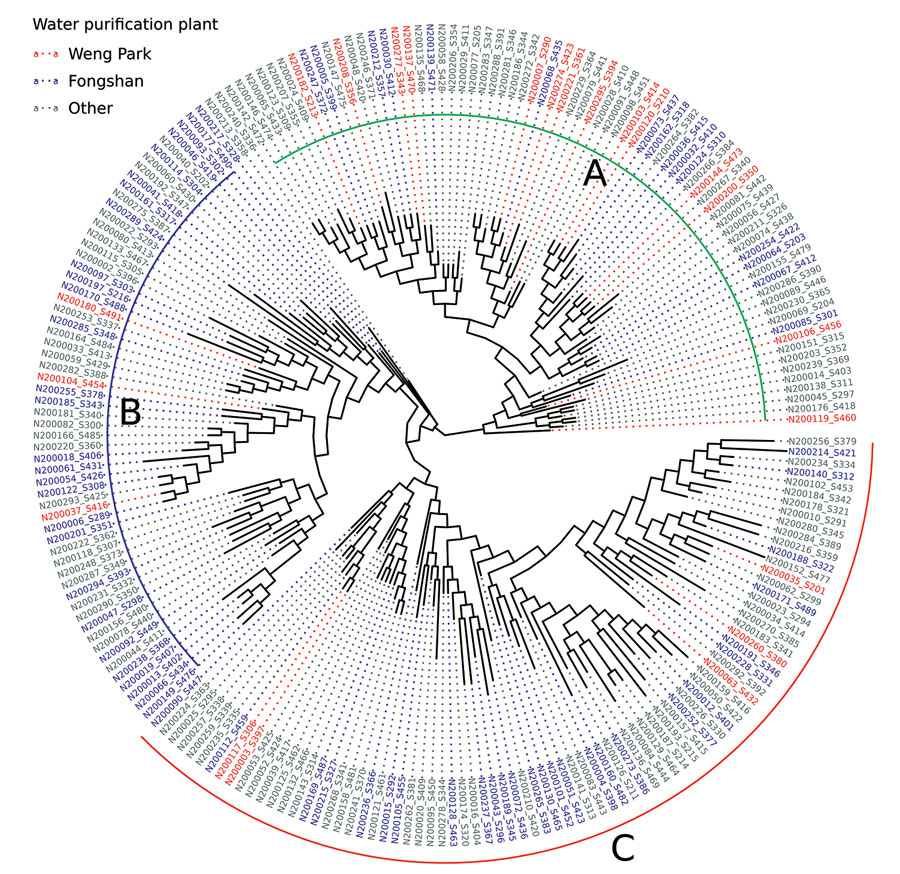Volume 30, Number 8—August 2024
Research
Phylogeographic Analysis of Mycobacterium kansasii Isolates from Patients with M. kansasii Lung Disease in Industrialized City, Taiwan
Figure 3

Figure 3. Maximum-likelihood phylogram of clinical Mycobacterium kansasii isolates from patients with M. kansasii lung disease in industrialized city, Taiwan. Phylogeny with major clades are labeled as A, B, and C; colored text indicates source of water for patient households.
Page created: June 18, 2024
Page updated: July 20, 2024
Page reviewed: July 20, 2024
The conclusions, findings, and opinions expressed by authors contributing to this journal do not necessarily reflect the official position of the U.S. Department of Health and Human Services, the Public Health Service, the Centers for Disease Control and Prevention, or the authors' affiliated institutions. Use of trade names is for identification only and does not imply endorsement by any of the groups named above.